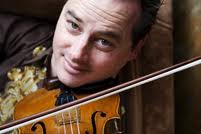|
Symphony
MYSTICAL PLANETS AND LIVELY GERSHWIN ORTIZ AT FINAL SRS CONCERT
by Peter Lert
Sunday, May 4, 2025
Symphony
VSO'S CONCERT MUSIC OF TIME, MUSIC OF PLACE
by Peter Lert
Sunday, April 27, 2025
Choral and Vocal
VOCAL ELEGANCE AND FIRE AT THE 222'S RECITAL APRIL 26
by Pamela Hicks Gailey
Saturday, April 26, 2025
CANTIAMO SONOMA SINGS AN INSPIRED GOOD FRIDAY MOZART REQUIEM CONCERT
by Pamela Hicks Gailey
Friday, April 18, 2025
DRAMATIC SHOSTAKOVICH SYMPHONY CLOSES PHILHARMONIC'S 25TH SEASON
by Terry McNeill
Sunday, April 13, 2025
LARGE COLLEGE OF MARIN AUDIENCE GREETS STOPHER ARTISTRY
by Terry McNeill
Saturday, April 5, 2025
Chamber
FRISSON DELIVERS SHIVERS OF DELIGHT
by Abby Wasserman
Sunday, March 30, 2025
OLD AND MOSTLY NEW IN SRS MARCH CONCERT IN WEILL
by Peter Lert
Saturday, March 22, 2025
Symphony
TWO FORMIDABLE SYMPHONIES AND PURPLE MOUNTAINS AT SRS CONCERT
by Peter Lert
Sunday, February 23, 2025
Chamber
THE PARKER CAPTURES DEMANDING ADES QUARTET AT RAC SEBASTOPOL CONCERT
by Peter Lert
Saturday, February 15, 2025
|
 |
 Violinist Aaron Redner |
MIXED RESULTS FOR COM SYMPHONY IN NOVATO CONCERT
by Kenn Gartner
Sunday, November 21, 2010
When I review a program, the hope is to provide performers with material they might use in future publicity, and there is an expectation of being moved by the performance and a desire to tell friends. The College of Marin Symphony Orchestra concert Nov. 21 in Novatoís Unity Church had less than sterling merit, the needs of the music largely unfulfilled.
In the Boxy wood-frame church at Hamilton Field the orchestra took up several front rows, the rest of the main floor was about eighty percent occupied, and this reviewer along with a few video cameramen were the only occupants in the balcony.
For those with little knowledge of how orchestral programs work, itís a given out that most of a concertís work is done in rehearsal. The plan of the program, dynamics, interpretation and such are dependent on the conductorís rehearsal technique and organizations. What happens at the performance has already been determined. Another factor is programming and the pieces should be appropriate for the orchestra and its players. In Sundayís concert there was little evidence of either of the above. The Orchestra seems to be comprised of older students, local professionals, and occasional members of the Highway 101 Symphony (Freeway Philharmonic).
Aaron Redner, a College of Marin alumnus and soloist in Mendelssohnís Violin Concerto in E minor, Op. 64, presented himself on stage in a greenish tee shirt. What he wore would not have made a difference if his performance measured up. He had wonderful tone but his playing bordered on the slick, and he often softened the hardest parts so much that the orchestra, loosely controlled by its conductor, drowned out his playing. While the start of this work was marked by the rough entrance of the orchestra, an egregious failing which happened at many of the starts of the various movements in the two works performed.
Mr. Rednerís violin technique was adequate but in a number of times, following an upward passage, his bow arm swept wildly into the air. The first time this brashness occurred, the intonation of the runís final note was affected. However, as the concerto progressed, both soloist and orchestra became better balanced. It should be noted the most difficult conducting is that of accompaniment, and more concise management of the dynamics would have helped this performance. During the eighth-note passages in the third movement, while not the soloistís prime material, the melodic line was frequently drowned out by the orchestra. Mr. Redner seemed to tire in this third movement, the lyrical momentum decreasing.
Sibeliusí Symphony No. 2 in D major, Opus 43, is neither a work for a faint-hearted musician nor for those whose listening skills need polishing. A huge amount of material is presented by the composer, and an audience needs some skill in the art of listening. That the work is enjoyable, particularly in the Fourth Movement, is a given. The conductor provided oral program notes, enabling many in the audience to better focus on the work. In Ms. Flandreauís conducting there was less cuing and less attention paid to dynamics gradations than the Symphony needed. Only in the vivacissimothird movement of this great work did I hear cogent conducting. Here and in the fourth movement there was continual parallel use of arms and disconcerting graceful hair brush backs with the left hand from the podium, but the section cuing, dynamic flexibility finally improved and helped the Orchestra maintain the soaring musical line. At the return of Sibeliusí grandiose theme in the finale, the Orchestraís tempo was slower than what Ms. Flandreau wanted. It was a satisfactory reading of the work, the orchestra following the score closely.
At the concertís conclusion the sections of the orchestra were each given bow.
|
